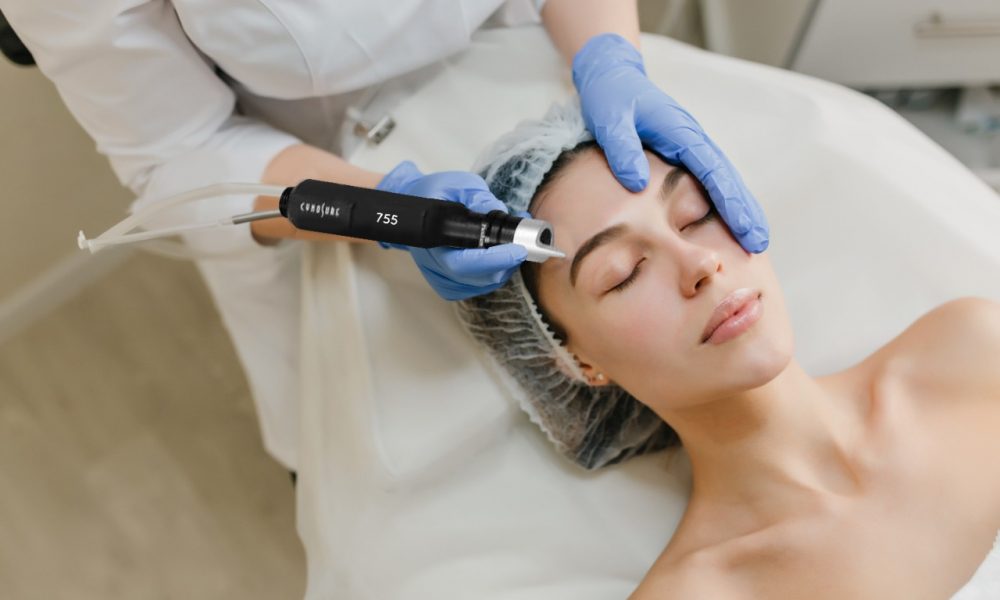
Pigmentation disorders affect the color of the skin and are a common concern for many individuals. The quest for an even skin tone has led to the advent of numerous pigmentation removal treatments in Singapore. Such treatments aim to correct the various types of skin pigmentation that arise due to different causes. This article delves into the nature of skin pigmentation, its causes, and the non-surgical treatments available, with a particular emphasis on the Pico Laser technique.
Types of Skin Pigmentation
Melasma
Melasma is characterized by brown or gray-brown patches on the skin, often appearing on the face. It is more prevalent among women, especially during pregnancy, hence being termed the “mask of pregnancy.”
Hyperpigmentation
This is a condition where certain spots on the skin become darker than the surrounding areas. It can occur in small patches, cover large areas, or affect the entire body.
Hypopigmentation
Conversely, hypopigmentation occurs when patches of skin become lighter than the normal surrounding skin. This can result from a loss of melanin, the pigment that gives skin its color.
Vitiligo
Vitiligo is a long-term condition where pale white patches develop on the skin, due to the lack of melanin. It can affect any area of the skin.
Sunspots
Also known as liver spots or solar lentigines, sunspots are small, darkened patches on the skin caused by direct, prolonged exposure to ultraviolet (UV) rays.
Causes of Skin Pigmentation
Genetic Factors
The primary determinant of skin color is genetic. Inherited disorders such as albinism and vitiligo lead to hypopigmentation, whereas freckles, a form of hyperpigmentation, are often genetically predisposed.
Sun Exposure
Excessive sun exposure can lead to an increase in melanin production, resulting in hyperpigmentation. It is the skin’s natural defense mechanism against harmful UV rays.
Hormonal Influences
Hormonal changes, particularly those associated with pregnancy or the use of oral contraceptives, can trigger melasma.
Inflammation
Post-inflammatory hyperpigmentation (PIH) occurs after a skin injury or inflammation such as cuts, burns, acne, or lupus. It is more common in darker skin types.
Aging
As the skin ages, it may develop age spots or liver spots, especially in areas frequently exposed to the sun.
Non-Surgical Pigmentation Removal Treatments
Non-surgical pigmentation removal treatments in Singapore have gained popularity due to their effectiveness and minimal downtime. These treatments range from topical applications to advanced laser technologies.
Topical Medications
Topical treatments for pigmentation include ingredients like hydroquinone, kojic acid, azelaic acid, and vitamin C. These substances can lighten hyperpigmented areas by inhibiting the production of melanin.
Chemical Peels
Chemical peels involve applying a solution to the skin, which causes it to exfoliate and eventually peel off, allowing new skin to replace it. Depending on the depth of the peel, it can be effective in treating various pigmentation issues.
Microdermabrasion
Microdermabrasion is a procedure that sands down the skin to remove the outermost layer, helping to remove sunspots and light pigmentation.
Intense Pulsed Light (IPL)
IPL treatments use light energy to target a certain color in your skin. When the skin heats up, it sheds the unwanted pigment cells and, over time, the spots fade.
Pico Laser
The Pico Laser has revolutionized pigmentation removal treatments in Singapore. It is a non-invasive laser technology that delivers ultra-short picosecond pulses of energy into the skin.
The Pico Laser is a cutting-edge aesthetic device that operates at speeds measured in picoseconds (trillionths of a second). This allows for a very precise impact on the targeted pigment with minimal heat transfer to surrounding tissues.
Pico Laser works by emitting laser energy that targets pigment in the skin. The laser energy is absorbed by the pigmented areas, which causes them to fragment into tiny particles. These particles are then naturally eliminated by the body’s immune system.
Conclusion
Skin pigmentation issues can be a significant cosmetic concern for many individuals, impacting their quality of life. With advancements in non-surgical pigmentation removal treatments, there are now effective options available that offer minimal discomfort and downtime. Among these, the Pico Laser stands out as a highly precise and effective treatment modality for those seeking to address their pigmentation concerns in Singapore. With proper care and the right treatment approach, achieving a more even skin tone is possible.

